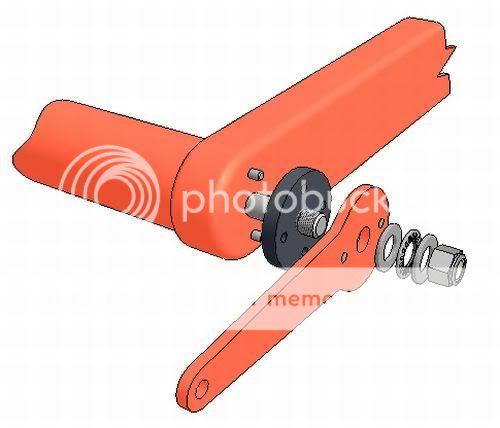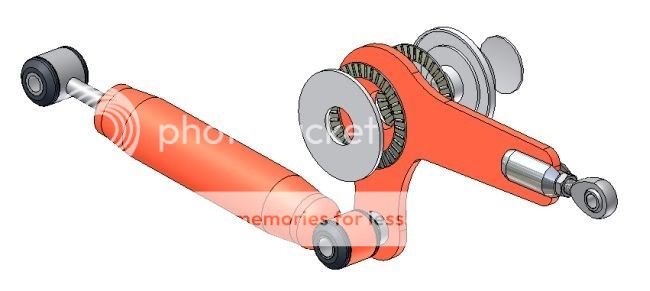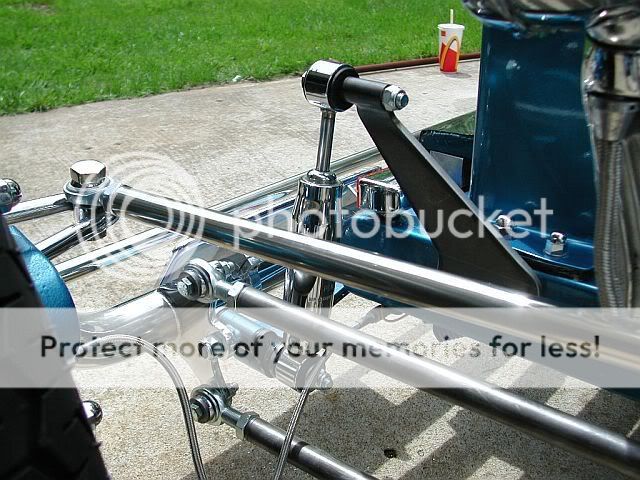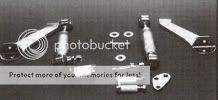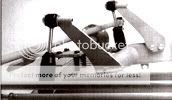I checked on the car, and it had regular hyd. shocks. It's installed,and o'boy does it work. I put nylon fender washers between the bellcranks, and the frame, plus another washer on the outside next to the nut.The bellcranks swivel very easy on the bronze bushings, and the shock end bushings move on the bolts just fine. I had to lengthen the right front hard brake line to get around the forward swing of the lever. THose double flare connections on the lines seem to be only good for two or three
tightens before they loose the seating flex.
Road testing the new installation showed the action to be quite a bit stiffer. The shocks seemed to capture the jolts, and jars more efficiently. I didn't notice as much suspension deflection as before, but overall the front end seemed to absorb more of the heavier bumps, and potholes much better. At first the connecting links on the top between the bellcranks, and the axle were at a slight angle which appeared to push the levers to the side instead of up, and down. I put a spacer on the axle mounting which brought the links back to a verticle plane.
So having the installation in it's final phase, I dissassembled the setup and sent it to the platers to be chromed. Very satisfied with this retrofit to improve the ride of the car.
Next up is the construction of a tear drop trailer to pull behind the car on future road trips.




